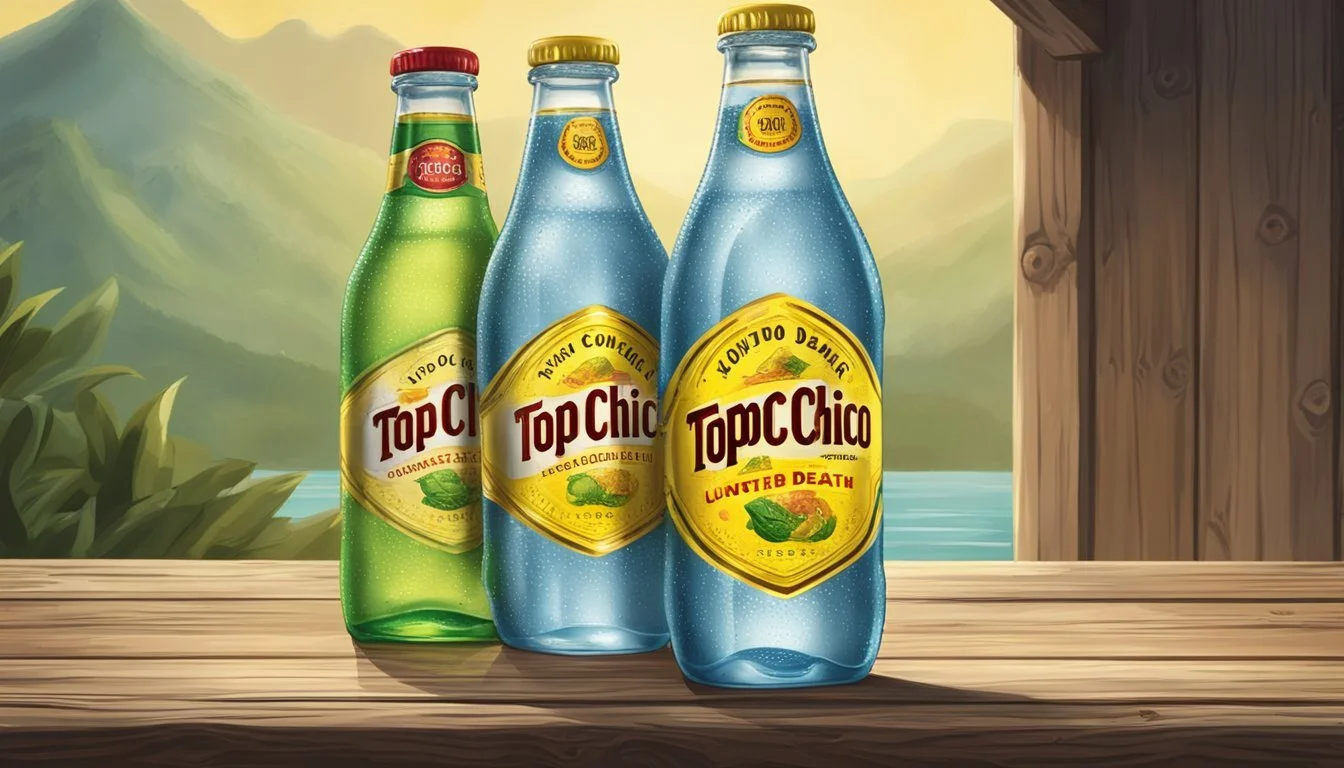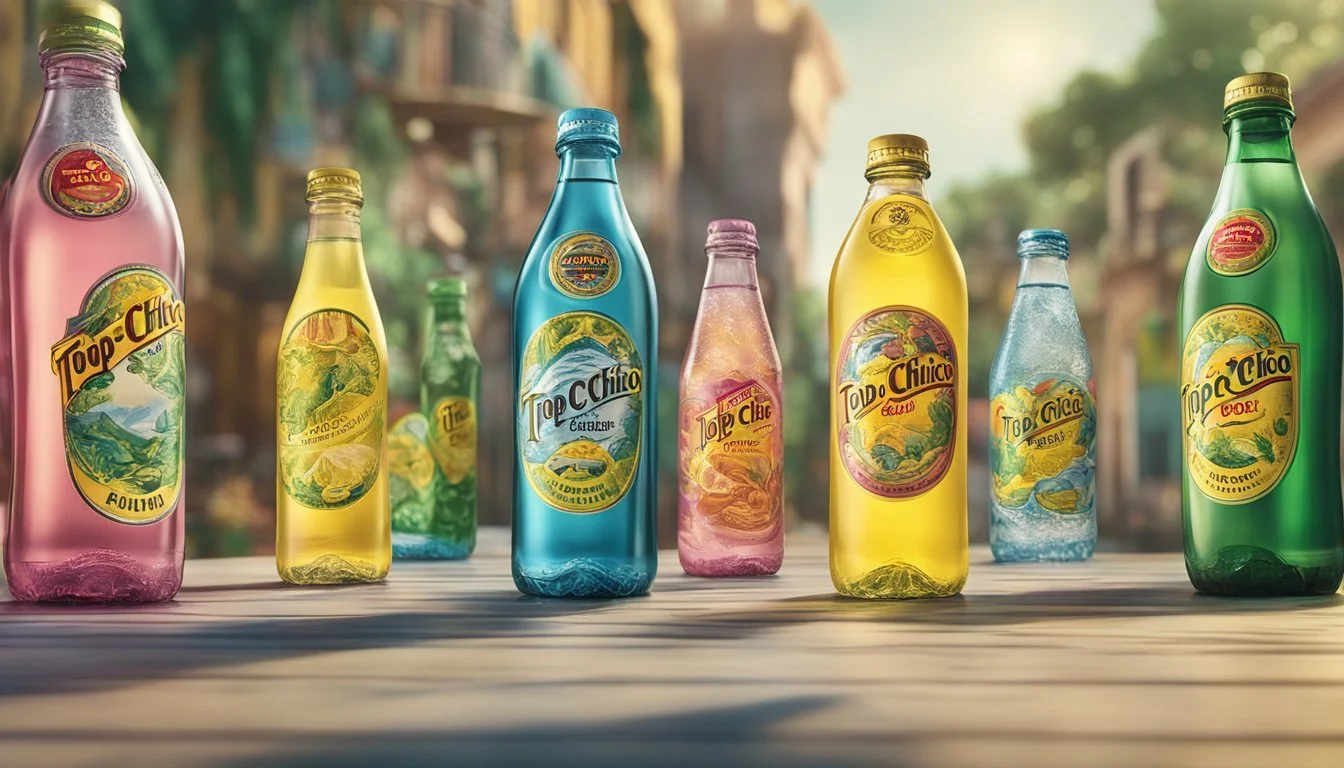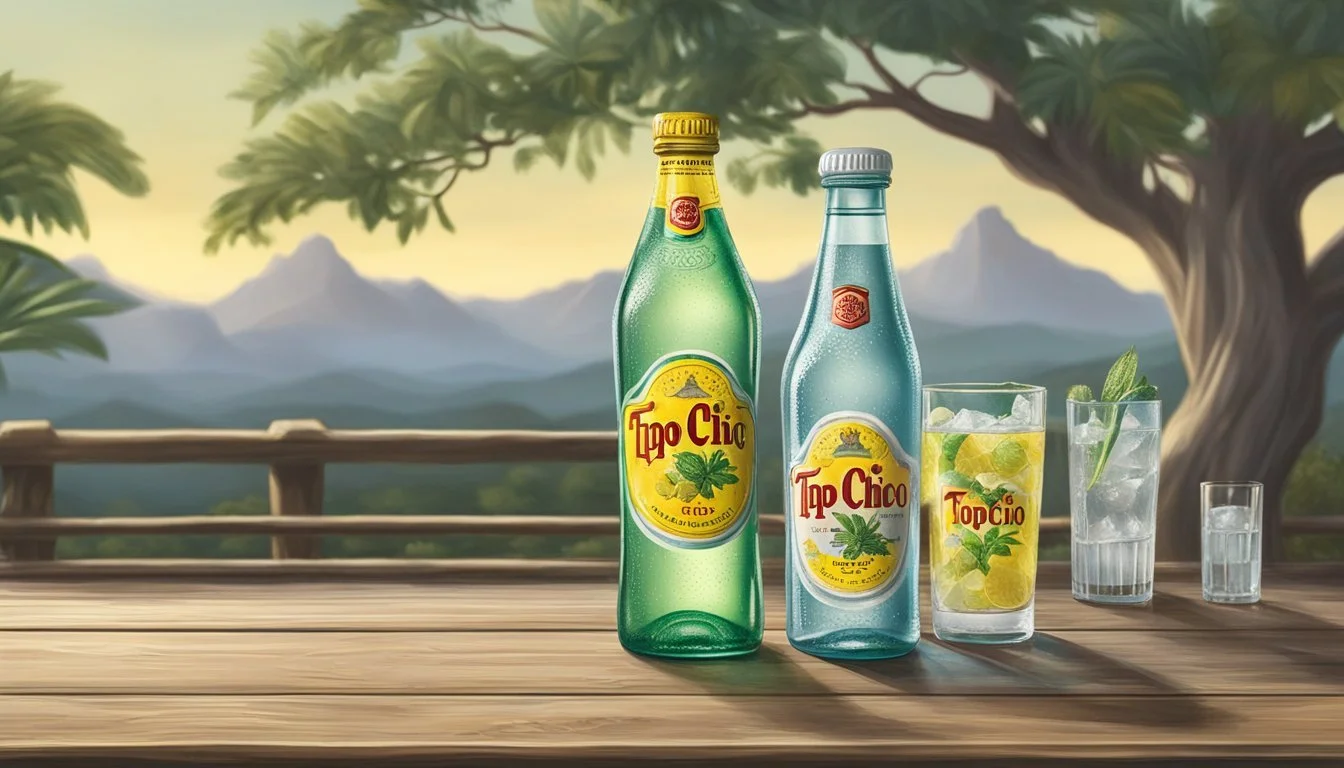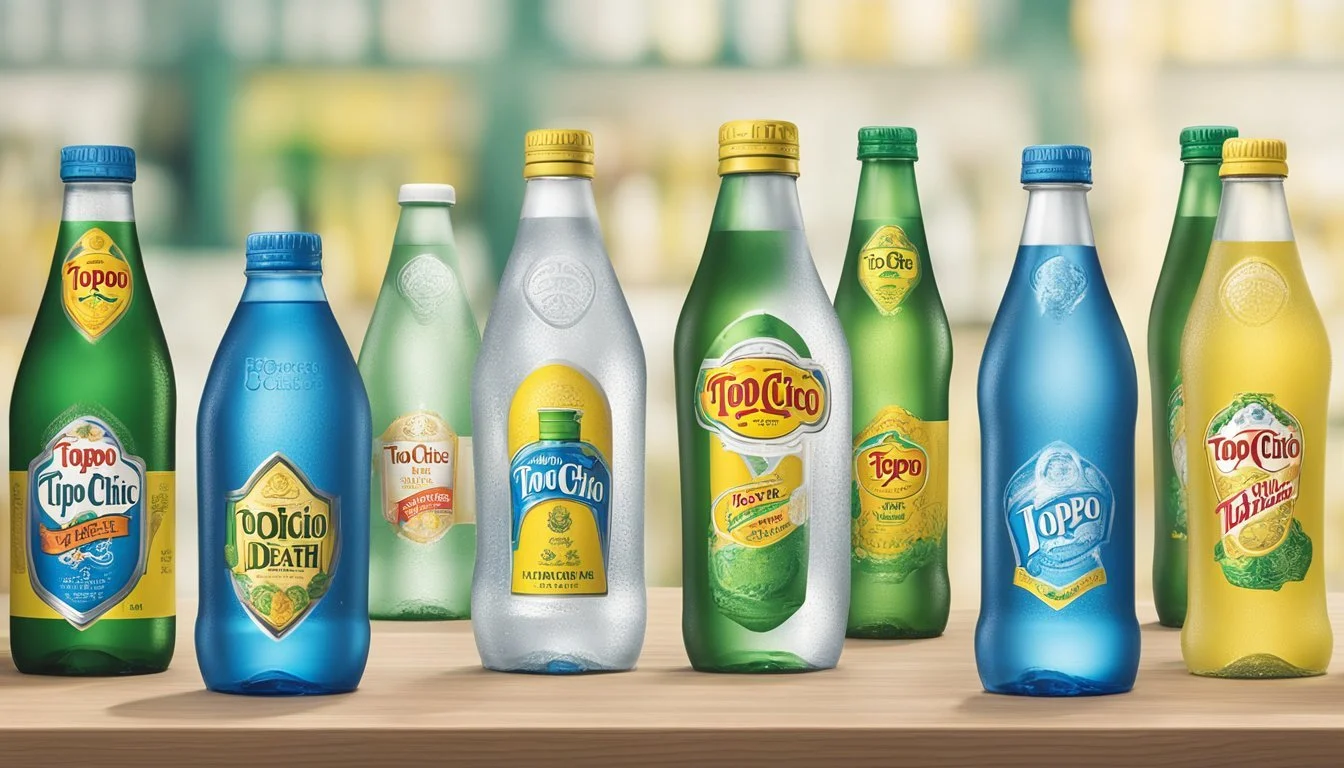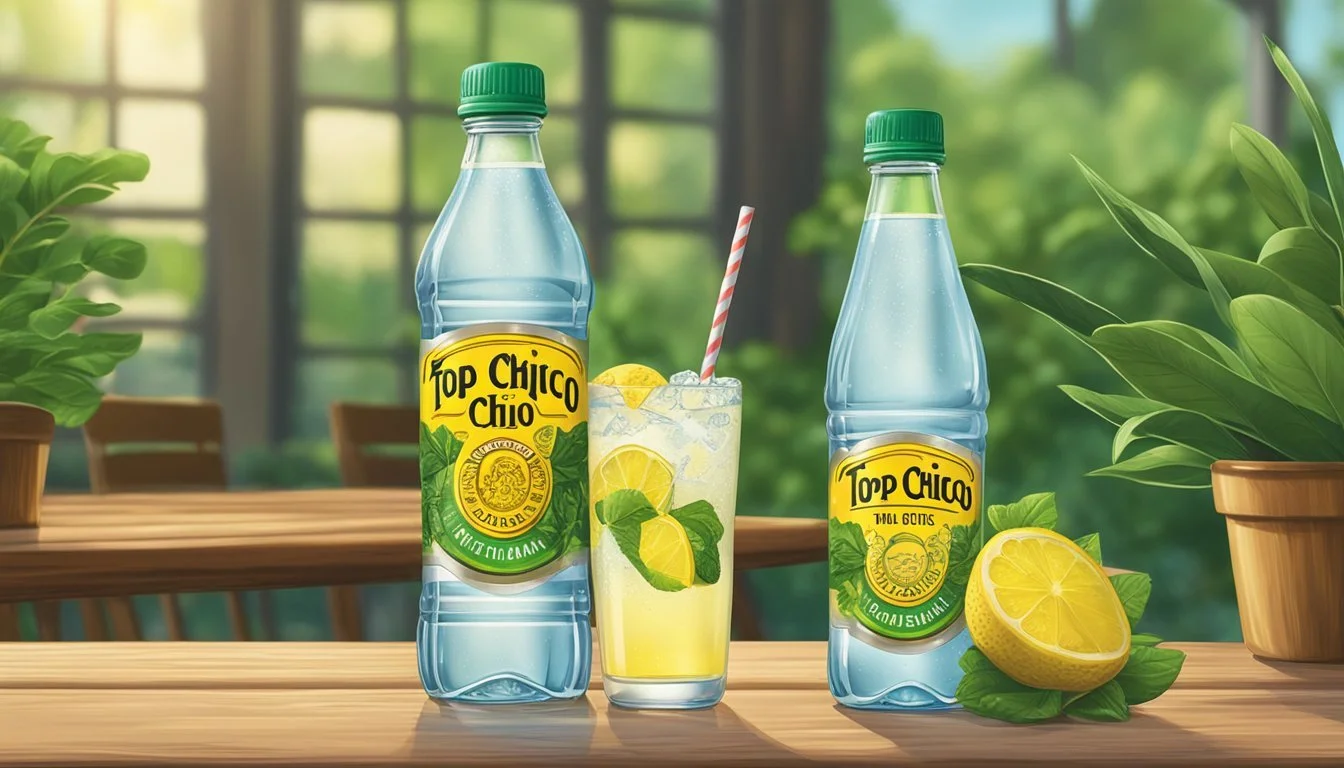Topo Chico vs. Liquid Death
A Clear Comparison of the Best Bottled Waters
When it comes to bottling quality and maintaining distinct characteristics, Topo Chico and Liquid Death stand out in the sparkling water market. Topo Chico, known for its intense carbonation and crisp flavor, is sourced from springs in Monterrey, Mexico, making it a favorite among sparkling water enthusiasts. Liquid Death, on the other hand, offers a different experience by sourcing its water from the Austrian Alps and packaging it in edgy, punk-inspired cans.
The main divergence between these two lies in their carbonation and origin. While Topo Chico boasts natural carbonation and a unique mineral composition that many find refreshing, Liquid Death opts for a more straightforward approach with its non-naturally carbonated water. This difference not only influences taste but also the overall drinking experience.
For those who prioritize purity and a clean, minimalist aesthetic, Liquid Death's branding and alpine source may be more appealing. Conversely, the robust carbonation and mineral-infused taste of Topo Chico cater to those who enjoy a more traditional sparkling water experience with a bit of cultural flair.
History and Origin
Both Topo Chico and Liquid Death have unique and interesting histories that trace back to their distinct geographical origins.
Topo Chico's Roots in Monterrey, Mexico
Topo Chico, established in 1895, originates from the city of Monterrey, Mexico. The source of Topo Chico is the Cerro del Topo Chico, a mountain that lends its name to the brand.
Mexican entrepreneur Vitaliano Paez saw the potential of the mineral-rich water and set up a bottling plant at the site.
During the early 20th century, Topo Chico water's popularity grew rapidly throughout Mexico. By the 1920s, its success had reached international markets.
The natural carbonation and mineral content of Topo Chico have made it a favorite in various regions, particularly in Texas, where it is commonly used in cocktails and for its refreshing taste.
Liquid Death's Journey from the Austrian Alps
Liquid Death is a relatively newer brand compared to Topo Chico. It sources its water from the pristine Austrian Alps. The brand markets itself with a unique name and striking packaging to capture consumer interest.
The company offers both flat and sparkling water options, appealing to various preferences. The water is known for its purity and is bottled at the source in Austria.
Liquid Death is available through direct sales on its website and in notable retail stores like Whole Foods and 7-11. Its focus on edgy marketing and environmental consciousness has helped it establish a solid presence in the bottled water market since its inception.
Product Composition
The composition of bottled waters varies significantly based on their sources and processes. Topo Chico and Liquid Death differ in their mineral content and carbonation methods.
Analyzing Topo Chico's Mineral Content
Topo Chico is sourced from natural springs in Mexico and is known for its unique mineral content. This sparkling mineral water is naturally carbonated, giving it its signature fizz.
Key minerals include calcium, magnesium, and sodium. Calcium is essential for bone health, while magnesium plays a role in muscle function. Sodium contributes to the water's crisp taste.
Topo Chico claimed to have reduced levels of harmful substances like forever chemicals, making it safer for consumption. This ensures it remains a popular choice for both taste and health-conscious consumers.
Understanding Liquid Death's Ingredients
Liquid Death, sourced from the Austrian Alps, offers both flat and sparkling water options. The sparkling variant is artificially carbonated, unlike Topo Chico. This gives it a different texture and taste profile.
The water is marketed as "100 percent mountain water," emphasizing purity. Being non-mineral water, it lacks the diverse mineral profile found in Topo Chico.
Available in recyclable aluminum cans, Liquid Death appeals to environmentally conscious consumers. The absence of natural carbonation and specific minerals might concern some, but it promises a clean, crisp hydration experience.
Brand Positioning and Evolution
Topo Chico and Liquid Death are two distinct brands in the bottled water industry, each with unique marketing strategies and branding techniques that set them apart. The following sections explore how each brand approaches its audience and carves out its niche in the market.
Marketing Strategies of Topo Chico
Topo Chico has been a longstanding favorite among sparkling water lovers. Sourced from a spring in Mexico, Topo Chico leverages its rich history and heritage to position itself as an authentic choice. This brand aims to evoke a sense of tradition and connection to its origins, which appeals to a loyal customer base.
The marketing approach relies heavily on emphasizing the brand's authenticity and the natural carbonation of its water. Topo Chico also engages with consumers through lifestyle branding, frequently associating itself with events and influencers that focus on culture and culinary experiences. This strategy helps the brand maintain a prestige that resonates with both older and newer generations.
Branding Techniques of Liquid Death
Liquid Death stands out in the bottled water market by adopting an unconventional and edgy branding style. Sourced from the Austrian Alps, this water is bottled at the source and marketed with a rebellious spirit. Its branding features dark, irreverent themes and packaging that looks more akin to an energy drink or craft beer than traditional bottled water.
Liquid Death uses bold and provocative messaging to position itself as the "cool" and alternative option in the water industry. Its marketing strategy includes collaborations with punk bands and extreme sports athletes, appealing to a younger, more adventurous demographic. The brand also makes bold environmental claims, emphasizing the use of recyclable aluminum cans over plastic bottles.
By combining a unique look with strong ethical messaging, Liquid Death has successfully differentiated itself in a crowded market, creating a sense of community among its consumers who appreciate its distinctive approach.
Packaging and Sustainability
Packaging and sustainability are critical components when assessing the environmental impact of bottled water brands. Topo Chico and Liquid Death use different packaging materials that offer unique advantages and challenges for recycling and environmental health.
Topo Chico's Glass Bottles Versus Plastic
Topo Chico primarily uses glass bottles for its sparkling water. Glass bottles are recyclable and often considered more eco-friendly than plastic.
While glass production requires significant energy, glass bottles can be reused and recycled indefinitely without loss of quality. This durability and reusability contribute positively to sustainability.
However, glass is heavier than plastic, which results in higher transportation emissions. Still, it avoids the harmful environmental impact associated with single-use plastic bottles.
Liquid Death's Aluminum Cans and Recycling
Liquid Death opts for aluminum cans. Aluminum is one of the most recyclable materials available, with a recycling rate significantly higher than that of plastic.
Aluminum cans are lightweight, which reduces transportation emissions. The production of aluminum does consume considerable resources, but the recycling process uses only a fraction of the energy required to produce new aluminum.
Additionally, aluminum cans are compact and efficient to ship, offering a practical and sustainable packaging solution that aligns well with environmental goals.
The choice between Topo Chico's glass bottles and Liquid Death's aluminum cans highlights different approaches to sustainable packaging, each with its own strengths and considerations for eco-friendliness and recycling.
Taste Profile and Consumption Experience
Both Topo Chico and Liquid Death offer distinct experiences in their taste profiles and textures, influenced by their unique carbonation and flavor offerings. The sensory experiences provided by these brands cater to diverse preferences.
The Sparkle: Carbonation and Effervescence
Topo Chico is renowned for its intense effervescence, often described as having "slicing bubbles." This high level of carbonation delivers a crisp and invigorating mouthfeel. It's sourced from natural springs in Mexico and undergoes natural carbonation, making it a favorite among those who prefer a robust sparkle.
In contrast, Liquid Death uses a more subtle carbonation. Originating from the Austrian Alps, it is carbonated during the bottling process rather than naturally carbonated. This yields a gentler fizz compared to Topo Chico's intense sparkle, providing a smoother sensation while still offering refreshment.
Flavor Options: From Classic to Creative Infusions
Topo Chico primarily boasts its classic mineral water, but it also includes flavors like Lime, and Grapefruit. These infusions are subtle yet refreshing, preserving the mineral-rich base with a hint of added zest. The natural mineral content contributes to its distinct taste and enhances the flavor profiles of these variations.
Liquid Death, with its striking branding, offers a unique flavor portfolio. While it started with plain sparkling water, it has expanded to include flavors like Mango Chainsaw and Severed Lime. These creative infusions blend natural fruit flavors without overpowering the original water taste, making them appealing for those who seek variety.
Sensory Experience: Texture and Aftertaste
The texture and aftertaste of Topo Chico are influenced by its high mineral content. The water has a slightly salty aftertaste, thanks to the natural minerals like calcium and magnesium. The texture is sharp and lively due to the intense carbonation, leaving a lasting impression on the palate.
On the other hand, Liquid Death tends to have a smoother texture that is easy on the tongue. The aftertaste is clean with minimal mineral influence, attributed to its pure source in the Austrian Alps. The carbonation level is balanced, avoiding an overly aggressive or flat mouthfeel, making it suitable for those who prefer a more understated sensory experience.
Health and Dietary Considerations
When comparing Topo Chico and Liquid Death, it's crucial to examine their effects on health and dietary needs. This involves looking at caloric values, hydration benefits, and any potential health concerns related to chemical contents.
Caloric Values and Hydration
Topo Chico and Liquid Death are both non-caloric, making them suitable for individuals monitoring their caloric intake.
Topo Chico contains natural carbonation, which can enhance the drinking experience without adding calories. Its effervescence is naturally sourced, providing a distinctive taste profile.
Liquid Death, sourced from the Austrian Alps, is not naturally carbonated and is forced-carbonated during production. This process ensures hydration without the added sugars or artificial ingredients often found in sodas.
These waters are excellent options for maintaining hydration, offering an alternative to plain water, especially for those looking to reduce their intake of sugary beverages.
The Concern Over PFAS and Chemicals
Per- and polyfluoroalkyl substances (PFAS) are a significant concern with bottled waters. A study disclosed the presence of these "forever chemicals" in Topo Chico, raising red flags about its safety and potential health impacts over prolonged consumption.
PFAS can accumulate in the body and are linked to various health issues. The Environmental Protection Agency (EPA) sets guidelines for acceptable levels, but even low concentrations can be concerning over time.
Liquid Death has not been reported to contain harmful levels of PFAS, positioning it as a safer choice in this regard.
While both brands provide hydration, consumers should be aware of these chemical concerns and choose their bottled water accordingly.
Consumer Information
In this section, consumers will find insights into the availability, accessibility, and pricing of Topo Chico and Liquid Death to make an informed choice.
Availability and Accessibility
Topo Chico is widely available across various regions, particularly in North America. It can be easily found in major grocery stores, convenience stores, and specialty beverage shops. Additionally, it is accessible online through numerous e-commerce platforms such as Amazon.
Liquid Death is also easily accessible but has a different market presence. It is often found in trendy cafés, bars, and select retail locations. It, too, is readily available online on platforms like Amazon, offering broad accessibility for digital shoppers.
Availability Summary:
Topo Chico: Grocery stores, convenience stores, specialty shops, online (Amazon).
Liquid Death: Cafés, bars, select retail locations, online (Amazon).
Pricing Comparison and Value for Money
When comparing prices, Liquid Death is often considered more expensive. A 12-pack of Liquid Death can range between $15-$20 depending on the region and vendor. This price point is attributed to its unique branding and premium packaging.
Topo Chico, on the other hand, is generally more affordable, with a 12-pack costing around $8-$12. The cost varies slightly based on location but remains a more budget-friendly option for consumers who enjoy sparkling mineral water.
Value Considerations:
Liquid Death: Higher cost; appeals to those valuing branding and packaging.
Topo Chico: Cost-effective; appeals to those looking for quality at a lower price.
Note: Personal preference plays a significant role, as some consumers may opt for the unique branding of Liquid Death over the traditional taste and affordability of Topo Chico.
Competitive Landscape
Several brands compete in the sparkling water market, each with unique features and market strategies. Key competitors include Pellegrino, Perrier, La Croix, and Spindrift. They offer varied flavors, carbonation levels, and sourcing backgrounds.
Alternative Sparkling Water Brands
Pellegrino and Perrier are renowned for their European elegance, with Pellegrino sourced from Italy and Perrier from France. They are often seen in fine dining settings, adding a touch of sophistication.
La Croix caters to American consumers seeking a variety of flavors, such as lemon, lime, and berry. Known for its colorful packaging and zero-calorie content, La Croix has gained a significant following.
Spindrift differentiates itself by using real fruit juice, providing a fresher, more natural taste. Unlike other brands that rely solely on natural flavors, Spindrift's use of actual fruit is a unique selling point.
Brands like Polar and Bubly focus on affordability and accessibility. Polar offers a variety of flavors at competitive prices, while Bubly, backed by PepsiCo, leverages extensive distribution channels to reach a broad consumer base.
Lesser-known brands like The Mountain Valley and Jarritos also contribute to the diversity of the market. The Mountain Valley offers premium glass-bottled spring water from Arkansas, while Jarritos appeals to those seeking a cultural twist with its Mexican origin.
Market Trends and Consumer Preferences
Premiumization is a significant trend in the sparkling water market. Consumers are increasingly willing to pay more for high-quality products. This trend benefits brands like Pellegrino and The Mountain Valley, which emphasize quality and origin.
Flavored sparkling waters are growing in popularity. Brands like La Croix and Spindrift capitalize on this by offering a wide range of flavors. Health-conscious consumers prefer drinks with natural ingredients and no added sugars, aligning with the offerings from Spindrift and Bubly.
Environmental concerns also influence buying decisions. Brands like Liquid Death, with its recyclable cans, attract eco-conscious consumers. Similarly, SodaStream offers a sustainable alternative by allowing users to make sparkling water at home, reducing plastic waste.
In summary, a shift toward premium, flavored, and environmentally friendly options shapes the competitive landscape, guiding consumer choices and market strategies.
Culinary Applications
Topo Chico and Liquid Death both hold unique places in culinary applications, excelling particularly in mixology and cooking, where their distinctive properties enhance various recipes and beverages.
Mixology and Cocktail Enhancements
Topo Chico is a favorite in mixology circles. Known for its effervescent bubbles, it elevates cocktails such as the Tom Collins with its lively carbonation. Bartenders often prefer it for highball cocktails due to its persistent fizz and mineral-rich taste, which pairs well with spirits like gin and vodka.
Liquid Death offers a different but complementary experience. Although it lacks natural carbonation, it still serves well as a mixer. Bartenders can add customized carbonation levels, making it versatile for cocktails. Its clean, crisp profile works well in simple drinks or when paired with tonic water or soda water.
Both waters play critical roles in cocktail preparation, enhancing flavors with their unique properties. A squeeze of lime or grapefruit can further accentuate their refreshing qualities, making them indispensable in the art of mixology.
Cooking and Flavor Pairing
In cooking, Topo Chico stands out for its mineral content and carbonation. It is often used to add a light, airy texture to batters in recipes for tempura or pancakes. The sparkling nature contributes to fluffier, crisper results. Its distinct mineral profile also helps in deglazing pans, lending a subtle but noticeable taste enhancement.
Liquid Death serves well in culinary applications where a still water base is preferred. Its purity and crisp taste make it ideal for making clear broths and soups, ensuring the flavors of primary ingredients shine through. It's also excellent for cooking grains like quinoa and rice, where it maintains the ingredients' authentic taste without added minerals.
Whether it's enhancing a dish's texture or maintaining a clean, neutral base, both waters provide valuable contributions to culinary applications. The choice between Topo Chico and Liquid Death ultimately depends on the specific requirements of the recipe or beverage.
More About Topo Chico
More About Liquid Death
Aqua Carpatica vs Liquid Death: Which Bottled Water is Better?
Core Hydration vs Liquid Death: Which Bottled Water is Better?
Hawaii Volcanic vs Liquid Death: Which Bottled Water is Better?
Hawaiian Springs vs Liquid Death: Which Bottled Water is Better?
Ice Mountain vs Liquid Death: Which Bottled Water is Better?
Icelandic Glacial vs Liquid Death: Which Bottled Water is Better?
Liquid Death vs Cascade Mountain: Which Bottled Water is Better?
Liquid Death vs Crystal Geyser: Which Bottled Water is Better?
Liquid Death vs Crystal Lake: Which Bottled Water is Better?
Liquid Death vs Essence pH10: Which Bottled Water is Better?
Liquid Death vs Kirkland Signature: Which Bottled Water is Better?
Liquid Death vs Proud Source: Which Bottled Water is Better?
Liquid Death vs Richard's Rainwater: Which Bottled Water is Better?
Liquid Death vs Simple Truth: Which Bottled Water is Better?
Liquid Death vs Talking Rain AQA: Which Bottled Water is Better?
Liquid Death vs Whole Foods 365: Which Bottled Water is Better?
Liquid Death vs Whole Foods Italian Still Mineral water: Which Bottled Water is Better?
Mountain Valley Spring Water vs Liquid Death: Which Bottled Water is Better?
Nestle Pure Life vs Liquid Death: Which Bottled Water is Better?
Poland Spring vs Liquid Death: Which Bottled Water is Better?
Purely Sedona vs Liquid Death: Which Bottled Water is Better?
San Pellegrino vs Liquid Death: Which Bottled Water is Better?
Solan de Cabras vs Liquid Death: Which Bottled Water is Better?

